Top Players Talk: Japanese Influence
Hey, everyone! Lucien Lachance back again with another episode of Top Players Talk! (Technically it’s Top Players Type, but that doesn’t flow off the tongue as nicely). In honor of Japan Nationals, we’ll be discussing the current Japanese meta, the effect of their unique tournament structure on their team building, and various things we saw from the finals.
Joining me this week is a new, yet well known face in Conan Thompson (conan). He qualified for Worlds last year through the Japanese system in the Senior division and is on top of the CP chart, so he’s quite the expert! In addition I have Adit Selvaraj (LithiumAcid). A lesser known player, however anyone who follows him on Twitter knows he is extremely well versed in the Japanese metagame and players and I cannot think of a player more qualified than him on this subject.
Kenan: To start off, what are some of the main differences between the current Japanese meta and the current US meta?
Adit: Well, Kangaskhan still reigns supreme as the top Mega Pokemon in both, while Gardevoir and Salamence are secondary in usage due to the popularity of the archetypes that utilize them (e.g Scar’s M-Gardevoir Trick Room, and Japan Sand). The US meta still favors Kangaskhan, but more types of Mega Pokemon are utilized, such as Metagross (which hardly sees usage in Japan), as well as Venusaur.
Conan: The difference is that the US meta is still using strategies that do not work very well in the current Japanese meta anymore, while the Japanese meta seems to be ages ahead of us. I think after Japan Nationals, the US will catch up to the Japanese meta though; kind of like they did last year. You can already see that things like Japan Sand are getting much more popular here.
Kenan: Conan, when did the US fare well against the Japan meta?
Conan: Oh, never, because the Japanese were playing XY Battlespot, which is pretty much VGC ’15 without the ORAS megas way before VGC ’14 was over. While we were playing VGC ’14, lots of Japanese players were playing that format instead, with unofficial tournaments as well.
Adit: Conan is very right about that. I think they had a longer time to cultivate ideas and practice longer. It’s also important to note that the players who studied the Battle Spot Doubles meta prior to VGC ’15 did quite well during the first wave of Regionals, and in some cases the subsequent ones.
Conan: Yeah, lots of Japanese players completely ignored VGC ’14 as well and only played the Battle Spot format.
Kenan: That definitely makes sense. The only players I know of who played XY Battle Spot are Angel Miranda (CT MikotoMikasa), William Hall (Biosci), Jeudy Azzareli (SoulSurvivor), and some of their friends. Given that the US and Japan metagames are rather distinct, why do US players look to top Japanese teams for inspiration?
Conan: Because they are usually a good meta call. The reason why they are top teams is because they do well vs the current meta and it’s often something the US meta isn’t prepared for yet.
Kenan: Even the teams that are massively weak to Landorus-T? M-Gardevoir TR and Japan Sand to name the two biggest two.
Conan: I don’t think they’re massively weak to Landorus-T. Though the matchup isn’t perfect, those teams definitely have ways to beat it.
Kenan: Of course, you have to beat the top Pokémon across the entire world to make a successful team.
Conan: Yeah, and obviously Landorus is popular pretty much everywhere so it wouldn’t make sense for a team to be weak to it, yet do well.
Kenan: Although I do feel both of the top Japanese cores that have emerged into the US have a distinct Landorus-T weakness, but that might be due the US fear of Rock Slide flinches.
Conan: I agree, they are weak to flinches.
Kenan: Adit, what do you think on this subject?
Adit: I believe that is due to the innovation many Japanese players utilize. Although America arguably has some of the most influential team builders, such as Angel Miranda (Mikoto Mikasa), Japanese players utilize many techs that would be advantageous against opponents not privy to that information (which is why American players enjoy using these teams). Since these teams require players to actively look for them or follow the creators of these teams on social media, a majority of opponents will not have knowledge of the techs used on your team.
Kenan: And the Japanese players definitely are more connected through their various blogs and whatnot. They’re more transparent with their teams and share information extremely readily.
Adit: That’s not necessarily true. During tournaments like the Japan Cup many players make their blogs private so opponents can not read up on strategies that particular player may favor and potentially use against them.
Kenan: But after the fact they’re extremely open about it, correct?
Adit: I wouldn’t say extremely open, but yes they are willing to share their information. Most players do not post their EV spreads but rather post the actual stat numbers in game.
Kenan: What’s the reason for posting the stats instead of the EVs? Isn’t it just slightly more time invested to find out the spread?
Adit: I think many of the players do not play on Showdown too much, so they may not have the exact spread used. Due to the portable nature of the DS and due to the fact taking pictures of the screen is common practice among Japanese players, I think they may find it more convenient
Kenan: That makes a lot of sense. I always wondered about that from looking at some blogs. What do you two think the effect Japan’s… unique (to put it nicely) qualification and tournament structure has on its metagame?
Conan: I definitely think it encourages more best-of-one style teams, which brings more surprises, which I see on Battle Spot.
Adit: Japan’s format is best-of-one, thus the element of surprise is extremely important. During offline tournaments (which are unofficial tournaments run by fans and possibly the only tournaments Japanese players get beside Nationals and Global Link) there is no way for the organizer to enforce anything but the in-game timer so strategies like Minimize become extremely viable. There is a term called “TOD” which stands for time-of-death, which refers to the strategy that Minimize teams employ by attempting to stall opponents to death by abusing the full extent of the timer to achieve victory. Some techs against TOD include the rogue inclusion of Toxic on the moveslot of a Pokemon. My good friend JUNIO won Arena-Off with the move Toxic on his Life Orb Thundurus which was his counter to Calm Mind Cresselia. The tournament structure usually consists of blocks which are played as round robin tournaments with the players with the highest Win-Loss ratio moving on to the final rounds.
Conan: I see these types of teams on Battle Spot sometimes and they have done well at offline events, especially Calm Mind Cresselia and things to counter that like Toxic Thundurus. But when it comes to more serious tournaments, like Japan Cup and Japan Nationals, there is a timer to often prevent these strategies from working, so I think teams used in those tournaments are less prepared for those strategies.
Kenan: Yeah, I’ve seen Toxic crop up every once in a while here in US and it’s never very useful, since the timers are very strict here. Anyway, from all the blogs you’ve read, what are the main things the US has taken away from the Japanese metagame thus far this year, aside from Japan Sand?
Adit: I think Mega Gardevoir Trick Room is the most commonly borrowed influence, especially after Ray used it on his YouTube channel. I recall a variant of the team got both Top 8 and Top 16 at Seattle Regionals piloted by 5th place Nikolai Zelinski (Nikolai) and Luis Canseco (Chaivon) who I had the pleasure of playing at Kansas Regionals.
Kenan: Blake and I tried really hard to make Mega Gardevoir Trick Room work, but we never quite found the magic.
Adit: It’s a difficult archetype to play well, but it’s quite rewarding when you manage to pull it off.
Kenan: What about a less used Japanese idea? I know Escavalier got heavy usage in Japan to beat Mega-Gardevoir Trick Room, but that’s all I know of.
Conan: I think solid Trick Room teams were rare in the US until recently and we started seeing more of those. I also think there were a lot more Mega Gengar in Japan, while it never got very common in the US. Also Safety Goggles never got common here as well, while it was on a lot of teams in Japan for offline tournaments and Japan Cup.
Adit: I would like to talk about the successful teams that really do take the advantage of the best of one format.
Kenan: Go right ahead.
Adit: During the Japan Cup a player known as ennui_noon placed 25th with a team consisting of Blastoise-M/Zapdos/Ferrothorn/Landorus-T/Cresselia/Garchomp. The Landorus-T held Bright Powder and the Ferrothorn held Quick Claw. Randy Kwa (R Inanimate) thinks he might have chosen to use those items because the Japan Cup is already a quite exhausting ordeal itself, and by choosing these items, you could possibly demoralize a potentially threatening opponent who may qualify for Nationals by putting them on tilt, which means they could miss qualification. In these best-of-one online tournaments, there is no such thing as opponent win % so there is no repercussion in trying to psychologically gain the advantage.
Kenan: And that makes a lot of sense. You may lose that game but if he tilts and loses the next 2 or 3 your net gain is higher. Fortunately, with our Nationals being best-of-three we won’t see much of that.
Conan: I saw the blog, and the player who used it didn’t seem very serious. Some weird teams will always succeed. The blog says they were “used for playing around safely” and talks about how he dodged Hyper Voices and Ice Beams.
Kenan: That doesn’t sound very safe to me! But we certainly can’t discredit his qualification to Nationals. So after watching the finals, what did you think of the two teams?
Conan: I think those types of teams were expected. The only thing I was surprised about was Charizard + Kangaskhan.
Kenan: Double Mega isn’t as common this format as it was the last, but it might be given some new vitality to players looking to rediscover that idea.
Adit: Well, both of them were both very interesting to say the least. Viera’s team was truly the embodiment of the best of what the Japanese metagame has to offer. Charizard-Y and Mega Kangaskhan have been a very popular pairing as dual Megas so it was interesting to see this combo come into play. I feel like the team had two modes: Kangaskhan overpowering teams who have little ways to counter it and Charizard-Y + Heatran pairing together to incinerate the opposition with high powered fire moves enhanced by the sun. This team reminds me a lot of Jeudy’s Worlds team where he mentions the reason he chose Charizard was because it beat many of the common Kangaskhan counters at the time. As for Mor1yama, it truly seemed like he ran a Bo1 style team.
Kenan: His team was definitely best-of-one oriented. Hidden Power Ice Landorus, while I’m sure is still useful in best-of-three, is nowhere near as potent as it is in a best-of-one.
Adit: Definitely. I think he also knew to expect many Landorus-Therian because there aren’t as much rogue choices of Pokemon at that level of play.
Kenan: what do you think of their choice of item on Landorus? Viera used a Life Orb variant and Mor1yama more than certainly used an Expert Belt special set.
Adit: I feel like both were interesting and effective choices. Viera’s team was a semi-Trick Room team and perhaps wanted a Pokemon that could function in and out of Trick Room, as its speed stat is average without the common Choice Scarf. Mor1yama’s item choice more or less functioned the same way, with the virtue of Expert Belt increasing the chance of KOing opposing Landorus with Hidden Power Ice.
Kenan: Also we can’t forget Earth Power counteracting common Wide Guard support alongside Heatran.
Conan: Well first of all I think a surprise Landorus-T set is good for best-of-one, so it makes a lot of sense. Having used Life Orb Landorus before for quite a long time, I feel like it’s a bit underwhelming, not being able to do its job all the time, but I can see why it comes in handy in best-of-one at least. The Expert Belt Hidden Power Ice Landorus also may not be amazing in best-of-three, but getting a surprise KO on opposing Landorus or Salamence could definitely decide the game immediately in a best-of-one.
Kenan: One of the other teams we saw from top 8 was Paranoia’s team with Liepard and Porygon2. Porygon2 seems rather out of place on the team, traditionally being a Trick Room only Pokemon. What do you think is its purpose on the team?
Conan: That was a team that looked really cool at first glance, but then I remembered what Porygon2 does on those types of teams. Here it’s most likely not a Trick Room variant, but rather a Foul Play, Recover, and possibly Swagger move set, which is very annoying to face when paired with a Liepard. Liepard can also Swagger and Foul Play while also having Fake Out. I’ve played against this on Battle Spot a few times before, and it is not fun.
Adit: Paranoia’s team was very fascinating. Porygon2’s impressive bulk and ability to Recover allowed it to make the most out of Liepard’s Swagger. Since a bulky variant of Porygon2’s offense leaves a lot to be desired, Paranoia uses Porygon2’s Foul Play for it to have some offensive presence. Garchomp was interesting to see again, but I can assume they didn’t want Landorus-T on the team to hinder the strategy of Swagger+Foul Play. Entei synergizes well with this team because, unlike the more conventional Arcanine, it lacks Intimidate but has the ability to cause burns. As SuperIntegration states in his report, “Foul Play works off the opponent’s stats and boosts, but not your status condition, ability and typing.” This means, most importantly, that you can burn a physical attacker and do no less damage with Foul Play, lessening their ability to do damage to you while not affecting your ability to do it back.
Kenan: So if a physical attacker snaps out of confusion, he can always just burn it. A rather interesting team, although it really all makes sense once you look at the big picture. I personally hope that’s something we don’t see often outside of Japan, as it looks annoying to play against. Looking at some of the other top 8 teams, what do you think about Politoed being in two of the top teams?
Conan: Well it shows rain is still good, but those 2 teams were very different. I don’t see it getting as big as it did last year, since people should be more prepared for it this time around, but a solid rain team like the ones that made top 8 are scary to face.
Adit: While I’m not that much of a fan of Barudoru’s team of Politoed / Ludicolo / Krookodile / Amoonguss / Zapdos / M-Gardevoir, Penguin’s team of Politoed / Jellicent / M-Kangaskhan / Escavalier / Smeargle / Amoonguss is an example of a RainRoom team done right. Kangaskhan and Smeargle offer disruption with Fake Out + Dark Void and potentially the ability to set up Trick Room in Smeargle’s case. Jellicent and Politoed can then mercilessly douse the opponents in the subsequent Trick Room or sleep turns of the opponent with the combo of Surf Politoed and Water Spout Jellicent. As for Rain itself? I’m sure a few rain teams will sneak in Top Cut during US Nationals.
Kenan: Both teams have definite modes that they operate in with one having a fast rain and the other a slower one, but both have an off mode to keep the opponent guessing. If you lead wrong against either team, it can easily lead to your exit from the tournament. Since I’m sure people will want to know about it, what do you think about the Senior finalist’s Snatch Rotom-W?
Conan: Again, best-of-one strategies. I think it was a good call though, with so many teams revolving around speed control moves and status moves in general. You can surprise them with that and completely ruin their plan. I don’t see it working very well after your opponent finds out about it though.
Adit: Definitely a best-of-one thing. I doubt that’s going to make that much of an impact in America
Kenan: He also had to have had some prior knowledge into his opponent’s team. He lead two special attackers and Suicune frequently knows Snarl. If I was his opponent, I’d be Snarling all day, not Tailwinding! But maybe that’s why I’m not a National finalist in Japan (also because I live in America). Were there any other interesting teams we saw or heard about from Japanese Nationals that you wanted to comment on?
Conan: I was impressed to see that BIDC made it all the way to top 4 with a team everyone should have already known the details about, since he posted everything on his blog (reposted in English by Chiron) before Nationals and used it in the Japan Cup. I also have to give credit to the player Penguin who made it to Japan Nationals 2 years in a row using a similar Smeargle / Kangaskhan / Amoonguss team both times — this time getting his invite.
Kenan: Were there any other interesting teams or things about the Japanese metagame or system you wanted to comment on?
Conan: Well, obviously everyone wants to see the system improved in the future, and I think making it a best-of-three tournament would influence the teams and play styles in a good way.
Adit: I think that players should borrow from Japan with caution. What may work there won’t always work here. That’s the most important thing I’d recommend before going to Nationals
Kenan: Certainly. The main thing to take away from this is that while Japan is using a lot of unique strategies we in America aren’t particularly prepared for, they are designed to succeed in a best-of-one format, which the US is no longer on. Anyway, thank you guys for taking time to answer all these questions, and good luck at Nationals!
8 Responses to Top Players Talk: Japanese Influence
Leave a Reply
You must be logged in to post a comment.

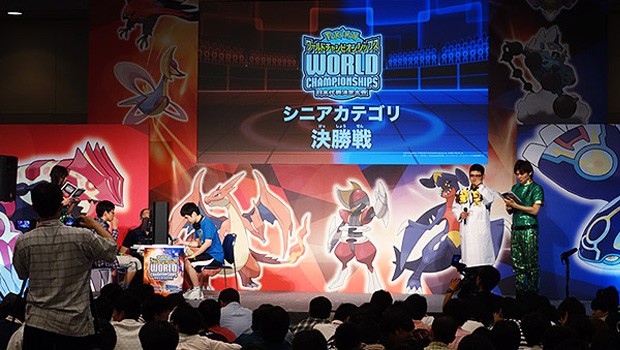
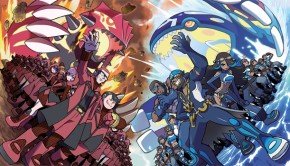
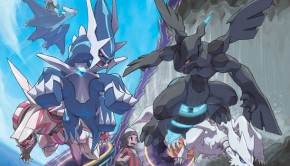
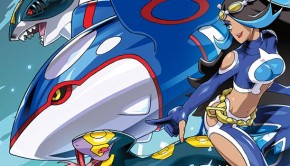

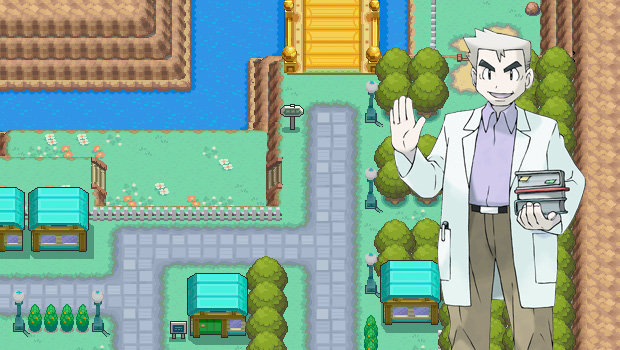




Just wanted to point out you spelled Angel’s username wrong >.>
This interview took place before we knew the full details of the teams used, and it turns out Paranoia’s Porygon2 does not know Foul Play at all, and ennui’s Ferrothorn held Leftovers over Quick Claw.
It was an honor to be interviewed by you Kenan, thank you very much for allowing me and conan to share our thoughts.
Oh shoot! Totally thought I double checked that! And thank you for helping me out. Couldn’t have done it without you!
Also, sorry this went out so late, I am currently out of town, and my wonderful editor was also very busy. Podcast will be up late tonight, where Conan, Adit, and myself go through the top Japan teams!
You guys touched on the biggest difference between the Japanese Metagame and the VGC Metagame as a whole: The Japanese don’t play VGC, they play Battle Spot. And as we all know, Battle Spot is a VERY different meta due to the lack of Best of Three, where surprise and gimmicks win the day more than consistency.
A very interesting meta isnt it? If you need translating of japanese blogs, you can always talk to me and Ill translate them for you
These articles are beginning to be the ones I look forward to the most 😀
Well thank you! These have been a learning experience for me, and I hope many others.
There is a complete different way of Japanese players and the rest of the world players think in developing their teams !! I really look forward to articles like these. They give an overall look of how the metagame is . After reading this , I am really hyped to see what US Nationals has to offer !!
Great article guys! I think it is fair to say we need to try and learn as much as possible from Japan and their meta and this is a great way to start! Thanks.
As for some of the points discussed, Paranoia’s MMence-Liepard team is really interesting. I hope delve into this a bit more but in short, it was a Fake Tears + Hyper Voice / Draco / Hyper Beam everything. The Porygon set ended up being Tri Attack, Ice Beam, HP Ground and Protect. With fake tears support and a bit of luck with Tri Attack, it has the potential to change a bo1 game very quickly.
Mega-Garde was very popular, something we haven’t seen so much in the western Nats. Maybe US Nats will change this?
The last point touched on was double mega. This is something that personally I have enjoyed playing in the past (ChariY/MLucario) though found a lot harder to play this year. A month or two ago (maybe more) Bicho posted a team of ChariY/Kanga/Genies/Aegi/Sylveon. Apart from this double mega hadn’t turned up much. I would think this would be a strong call for Bo3 Nats as it functions naturally well in that type of environment.
Again, great article guys!